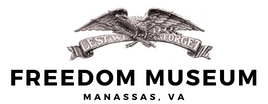William “Bill” Baker’s First Combat Flight
Baker’s Bomber Jacket
William “Bill” Baker arrived in Lecce, Italy, assigned to the 98th Bomb Group. He was a newly trained replacement Bombardier Navigator and Gunner who’d flown his first combat flight on October 16, 1943.
Willie Williams was the pilot and leader of the crew of 10 on the B-24 Heavy Bomber. Bill Baker’s crew position was in the nose turret of the aircraft affectionately named “Pug Nose Annie.” His job was to navigate, fly the aircraft exactly over the target in the final stages of the bomb run, and drop the bombs. Additionally, he would operate the nose turret fifty Cals to defend his aircraft from enemy attackers. The target on this day was Valvetrain, Austria, home of the Krupp Industries tank plant and military industrial site.
Bill was awakened early to dress, go to the chow hall for breakfast and join the rest of the Bomb Group crew members for the 05:30 morning briefing. It was here that the route of flight would be briefed, and Bill would receive critical data for input to the Norden Bomb Sight.
The Pug Nose Annie crew was transported to the plane to man up. On the way, Willie, the pilot, gave Bill the “new guy briefing.” He informed Bill that the aircraft had a full bomb load and a full tank of gas, making it extremely heavy and would require all the runway to take off. Bill was to inform the crew on the inter-communications system when the nose wheel left the pavement. This was so that they’d know they were airborne and wouldn’t be crashing and burning in the runway overrun.
Bill didn’t know that he was participating in an indoctrination ceremony common in the bomber community. He would’ve been nervous and excited about his first combat takeoff. But the information about the danger of overweight takeoff makes most new guys’ voices respond in a higher octave, making the whole crew chuckle. Willie held the nose down until the very last second when Bill reported 20 feet of runway remaining.
“We are airborne,” Bill said nervously as the 10-man crew cheered and laughed.
Bill had passed his first test; he would do his duty in this new demanding environment where everyone counted on the correct and prompt actions of their peers.
The flight continued and Pug Nose Annie joined 900 Bombers of the 15th Air Force enroute to the target. Bills position in the nose turret of the B-24 presented a panorama of a maximum effort bombing run on the enemy. In his diary, Bill said he had a hell-of -a-time controlling the electro-hydraulic nose turret trying to contribute to the aircraft defense against enemy fighters.
Three hours into the flight, the propeller on number four engine suddenly ran away. The prop normally turns at 1600 RPM, but suddenly increased to 2800 RPM and couldn’t be controlled or feathered. The engine quit running. This condition caused increased drag and the aircraft couldn’t keep up with the group or maintain its assigned altitude of 26,000 feet. The B-24 fire power was designed for mutual support, so Pug Nose Annie couldn’t continue to the target and was ordered to return to base. Willie did a good job of keeping the malfunctioning aircraft airborne. They had to jettison their bomb load over the Adriatic to lighten the aircraft. Willie nursed the aircraft back to Lecce and landed safely.
Bill wrote, “It was a hell-of-day and it didn’t even count.” If a crew member recorded 25 missions, he could go home. Sorties only counted if they successfully made it to the target. Pug Nose Annie returned to base short of the objective, so it didn’t count as a completed mission.
35 bombers were lost on the Valvetrain run, so it shouldn’t be surprising that many aircrews thought it was only a matter of time before the flack or enemy fighters or just bad luck ended them before they could complete the necessary missions. Although Bill recorded that he feared he wouldn’t survive even 25 missions, he flew a complete mission the following day, October 17. His combat flying didn’t end until he flew a total of 47 missions.
Many of the Freedom Museum’s items are donated by local families to tell the story of veterans from Manassas, Manassas Park and Prince William County and their patriotic contribution to preserving our liberty. To see this artifact and much more, visit us at our brand new location.

